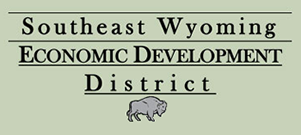Impact of the Southeast Wyoming Regional Economic Development District

Among the tools used for economic development in the region, the Southeast Wyoming Economic Development District's (SWEDD) Comprehensive Economic Development Strategy (PDF) is certainly one of the most effective tools in terms of providing collaborative planning. SWEDD remains ideally structured to coordinate efforts and bring regional value to its members as is evidenced in the following examples.
In 2011 the SWEDD identified a lack of Broadband as recurring need shared by each county in the district; Albany, Goshen, Laramie and Platte. A team of stakeholders was assembled with four goals in mind.
- Examine broadband pricing and explore ways to bring the cost down
- Increase access to online education and distance learning
- Increase public awareness about broadband and what it can do for them
- Assess and improve broadband in areas that are underserved.
A formal study was commissioned through Fail Engineering that was completed and distributed by the SWEDD to all member counties, key community stakeholders and the interested public in 2014. This study recommended an aggregate approach to capacity building with Torrington, WY identified as a pilot program location; in 2017 Torrington was successful in bringing broadband in to their community. The new line strengthens access to both Goshen and Platte counties with continued effort to expand further expand the service area.
With an ever increasing need to power their economic growth and potential, the SWEDD undertook a Grid Analysis and Power Resource Study through Tetra Tech, Inc. completed in 2016. This report provides critical data and asset mapping for future planning in each county. Collaboration and engagement among stakeholders has affects far beyond the deliverables; by working collaboratively to mitigate obstacles the group creates an organic commitment to success.
In 2016, the Workforce Investment and Opportunity Act established on a national level the requirement for Workforce Advisory Groups (WAGs) to be comprised of a majority of private sector businesses. These groups seek to bridge the gap between the industry reality of workforce issues and resulting efforts of Workforce Development Councils or Workforce Investment Boards in each state. Initially designed to follow the seven community college districts in Wyoming, more WAGs are being created to solve the problem of gap due to distance between communities. In the southeast corner of the state, SWEDD has identified these groups as a priority and as an ideal incubator for workforce solutions. The coordinated flow of information in and out of these groups will be the key to their potential impact and the SWEDD is perfectly positioned to coordinate efforts, encourage regional leveraging and to prevent silo affects.
The 2017 legislative session saw the creation and funding of the Economically Needed Diversity Options for Wyoming (ENDOW) Council. This council will rely on many sources to assemble "an exhaustive statewide assessment of socioeconomic data, existing, new and emerging economic sectors of the economy, identification of potential business development and Innovation Zones, an inventory of existing workforce strengths and deficiencies, economic trends and key enablers for economic growth in the state that translates to viable business development". SWEDD will be working with the district's WAGs to create Workforce Development Strategies. These will be incorporated into the updated Comprehensive Economic Development Strategy (CEDS) and will serve as a power document for many groups critical for economic development; Workforce Development Council, ENDOW Council, Governor's Office, Economic Developers, Community Colleges and many others.
Though a strict value may be difficult to quantify in relation to regional planning activities, the incredible benefits of coordination becomes evident when you take into account the totality of all of the above example planning efforts. When considering the return on investment for economic development planning funds, insight can be gained from understanding the flow of information in and out of the various groups and committees not unlike the parallels of knowledge/technology transfer and emerging economies. A value proposition may not always include a "but for" statement but will demonstrate how and why knowledge is powerful.








